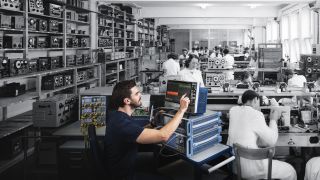AI is changing how we live
Today, almost six decades later, artificial intelligence is no longer science fiction. Large Language Models (LLM) power the intelligent assistants in our smartphones. Personalized recommendations we see on the internet are made possible with Machine Learning (ML) as well as groundbreaking developments in medicine, transportation and finance – AI is changing how we work, live and communicate.
Politics and business are also playing an active role. Governments are drafting the legal framework, while companies are searching for use cases. Both are investing in their own research and development along with AI startups.














